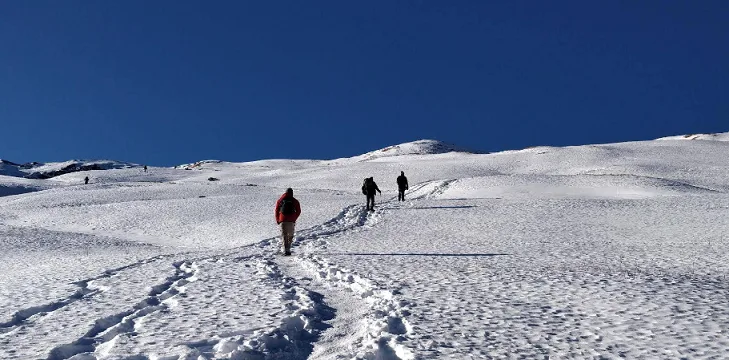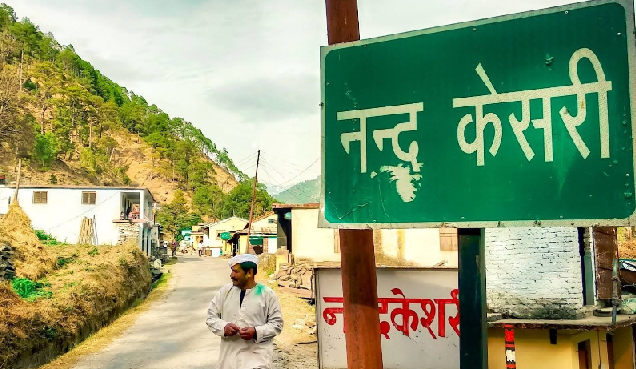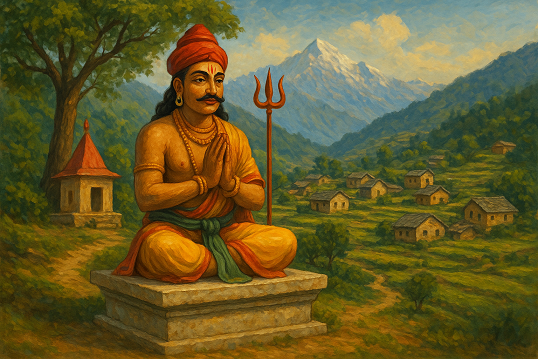Also Read
Nanda Devi Peak – A Sacred and Forbidden Himalayan Giant

Mohit Bangari
Explore Himalaya With Me!!
Facebook
Email
WhatsApp
Twitter
LinkedIn
Tumblr
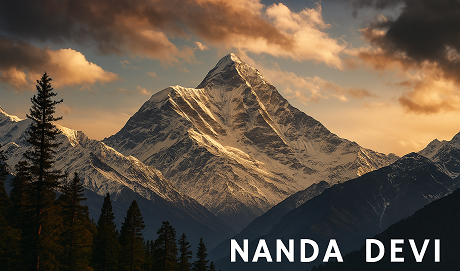
Quick Information Table
| Topic | Detail |
|---|---|
| Location | Chamoli district, Uttarakhand, India |
| Height | 7,816 metres (25,643 ft) |
| Coordinates | 30.375° N, 79.978° E |
| Geological Range | Garhwal Himalayas |
| Protected Area | Nanda Devi National Park & Biosphere Reserve |
| First Surveyed By | W.W. Graham, 1883 (attempt), later successful in 1936 |
| First Ascent | Noel Odell and Bill Tilman, 29 August 1936 |
| Climbing Allowed? | No (Banned since 1983) |
| UNESCO Site | Yes (since 1988) |
| Sacred Significance | Highly sacred to locals, especially in Kumaon and Garhwal |
| Viewpoints | Auli, Munsiyari, Binsar, Joshimath, Kuari Pass, Dharansi Pass |
Nanda Devi Peak is not just a mountain. It is the soul of Uttarakhand and a sacred icon of the Himalayas. Standing tall at 7,816 metres, it is the second-highest peak in India after Kanchenjunga. But within Indian territory, Nanda Devi remains the highest peak entirely inside India.
This peak is not just about snow, rocks, or trekking trails. It holds deep religious values, historic climbs, international espionage secrets, and ecological treasures. Let’s explore everything about this legendary mountain in detail.
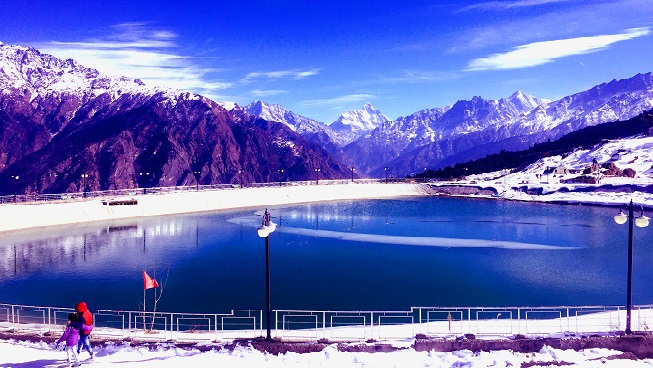
Table of Contents
Religious Significance of Nanda Devi
In Uttarakhand, Nanda Devi is not seen just as a mountain but as a goddess, protector, and daughter of the Himalayas. She is worshipped widely in the form of Devi Parvati, consort of Lord Shiva.
The entire region of Kumaon and Garhwal comes alive every 12 years with the Maa Nanda Devi Raj Jat Yatra, a massive spiritual pilgrimage that retraces the path of the goddess to her heavenly abode.
👉 I’ve written a full article on this powerful yatra here – Maa Nanda Devi Raj Jat Yatra 2026 – A Sacred Himalayan Pilgrimage
Discovery and First Ascent
The first official survey attempts were made in the 1880s by British explorers like W.W. Graham. However, the inner sanctuary remained untouched due to its tough terrain.
The peak was first climbed on 29 August 1936 by Noel Odell and Bill Tilman, marking it as one of the earliest successful climbs of such a challenging Himalayan summit.
The journey involved crossing the narrow Rishi Ganga gorge, making it one of the most difficult base-to-peak ascents ever done.
Nanda Devi National Park – UNESCO Recognition
In 1988, Nanda Devi National Park, along with Valley of Flowers, was declared a UNESCO World Heritage Site. The park hosts some of the rarest Himalayan flora and fauna. The biosphere reserve covers an area of over 2,236 sq km.
The area is also the natural habitat of snow leopards, Himalayan musk deer, and blue sheep. This recognition helped in conserving both the ecological value and the spiritual landscape of the region.
Why Nanda Devi is Banned for Climbing
Since 1983, the Government of India has banned climbing Nanda Devi and its inner sanctuary. The reasons were:
Ecological damage caused during expeditions.
Disturbance to the sacred environment.
Efforts to protect rare wildlife and plant species.
But another mystery added fuel to this ban — the Cold War nuclear device story.
👉 For full details, read my article: Why Climbing Nanda Devi Peak Was Banned
The Cold War Mystery – Nuclear Device in Nanda Devi
In 1965, during the Cold War, a secret mission was carried out by the CIA and Indian Intelligence Bureau (IB) to spy on China’s nuclear tests. They decided to place a nuclear-powered device on Nanda Devi to monitor Chinese missile activity.
However, due to a snowstorm, the team abandoned the device. When they returned later, it had disappeared. That nuclear-powered unit is still missing somewhere in the glacier, raising environmental concerns even today.
Many experts believe that the plutonium core might still be active and harmful for the glacier’s ecosystem.
From Where You Can See Nanda Devi Peak?
Even though climbing is banned, Nanda Devi can still be viewed from many picturesque locations:
Auli: Clear views from the ski slopes.
Kuari Pass: One of the best trekking spots for panoramic views.
Binsar: From Zero Point in Binsar Wildlife Sanctuary.
Munsiyari: Excellent views with Panchachuli peaks.
Joshimath: Great for sunrise and sunset views.
Chopta-Tungnath trek: On clear days, visible in the distant skyline.
Dharansi Pass: Inside the Nanda Devi Biosphere, for advanced trekkers.
Trekking in Nanda Devi Region
Although Nanda Devi peak climbing is banned, you can explore many nearby trekking routes such as:
Kuari Pass Trek- Coming Soon
Dharansi Pass Trek- Coming Soon
Nanda Devi Base Camp Trek (East Face via Munsiyari) – Coming Soon
These routes provide unmatched views and allow trekkers to experience the majestic aura of this sacred mountain.
Why Nanda Devi is Special
Only Indian peak to be highest within Indian territory
Home to India’s richest biosphere
Linked to one of the oldest mountain goddesses
Involved in Cold War geopolitics
A dream mountain for early climbers, but now untouched for 40+ years
Conclusion
Nanda Devi is not just a Himalayan peak. She is Shakti, mystery, and heritage rolled into one. From spiritual legends to espionage secrets, from UNESCO heritage to forbidden climbs, the story of Nanda Devi continues to attract trekkers, pilgrims, historians, and nature lovers from across the world.
Whether you view it from Auli, walk in her shadow during the Raj Jat Yatra, or just read her story — one thing is sure — Nanda Devi leaves a divine imprint on every heart.
You can also explore more on Himalayan treks like Darma Valley, Adi Kailash, and others on my website mohitbangari.com, where I share full guides, routes, permit tips and cultural info.
By – Mohit Bangari
Do you know about Ramman festival of Salud-Dungra village? It’s one of the intangible world cultural heritage of India in UNESCO. You can read a detailed article on this topic here.
Facebook
Email
WhatsApp
Twitter
LinkedIn
Tumblr
Related Post
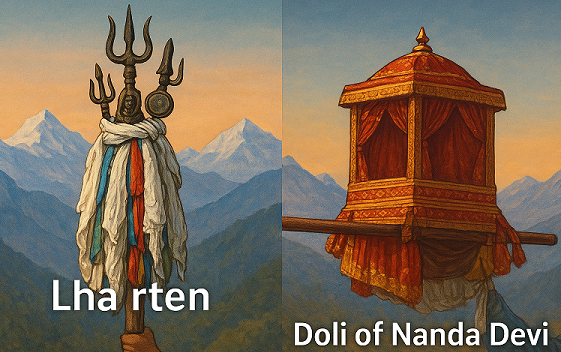
Blog
Mohit Bangari
15 September 2025

Incredible Himalaya
Mohit Bangari
17 September 2025

Mohit Bangari
Explore Himalaya With Me!!

Blog
Mohit Bangari
15 September 2025

Incredible Himalaya
Mohit Bangari
17 September 2025


Explore the beauty and cultures of the Himalayas, from Jammu and Kashmir to Arunachal Pradesh, Tibet and Nepal. My blog shares stories, pictures, and fun articles about this amazing region. Come along on a journey where each mountain has a tale and every valley hides a treasure. Join me as I discover the magic of the mountains together.
Welcome to my Himalayan Adventure!

